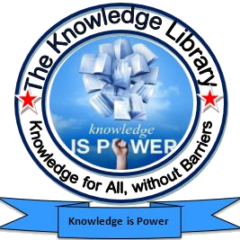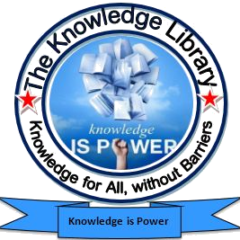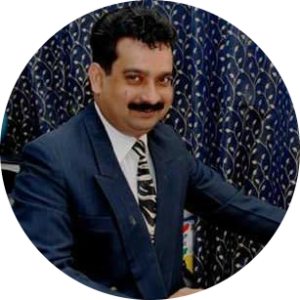
28th February is celebrated as National Science Day in India but do you know why and for what the day is celebrated as National Science Day. I am also sure you must have heard about celebrated Indian Scientist Sir Chandrasekhara Venkata Raman. On this day in 1928, he discovered a phenomenon of scattering of photons which was later known as ‘Raman Effect’ after his name. After two years in 1930, he got Nobel Prize for this remarkable discovery and this was the first Nobel Prize for India in the field of Science. To mark the discovery of his famous phenomenon National Science Day is celebrated in India on the day each year.
When was the day declared as National Science Day?
In 1986, the National Council for Science and Technology Communication (NCSTC) asked the Government of India to designate 28 February as National Science Day which the then Govt. of India accepted and declared the day as National Science Day in 1986. The first National Science Day was celebrated on February 28, 1987.
What is Raman Effect?
Raman Effect is a phenomenon in spectroscopy discovered by the eminent physicist while working in the laboratory of the Indian Association for the Cultivation of Science, Kolkata.
Raman Effect, change in the wavelength of light that occurs when a light beam is deflected by molecules. When a beam of light traverses a dust-free, transparent sample of a chemical compound, a small fraction of the light emerges in directions other than that of the incident (incoming) beam. Most of this scattered light is of unchanged wavelength. A small part, however, has wavelengths different from that of the incident light; its presence is a result of the Raman Effect.
Purpose of the Celebration:
The basic objective of observation of National Science Day is to spread the message of importance of science and its application among the people. National science day is celebrated as one of the main science festivals in India every year with following purpose-
- To widely spread a message about the significance of scientific applications in the daily life of the people,
- To display all the activities, efforts and achievements in the field of science for welfare of human being,
- To discuss all the issues and implement new technologies for the development of the science,
- To give an opportunity to the scientific minded citizens in the country,
- To encourage the people as well as popularize the Science and Technology.
Activities on the Day:
Students of the schools and colleges demonstrate various science projects as well as national and state science institutions demonstrate their latest researches. The celebration also includes public speech, radio-TV talk shows, exhibitions of science movie, science exhibition based on themes and concepts, watching night sky, live projects and researches demonstration, debates, quiz competitions, lectures, science models exhibitions and many more activities.
National Awards (2023)
DST instituted National Awards in 1987 to stimulate, encourage and recognize outstanding efforts in the area of science popularization and communication and in promoting scientific temper.
The National S&T Communication Awards, Augmenting Writing Skills for Articulating Research (AWSAR) awards, and SERB Women Excellence Awards and Rajendra Prabhu Memorial Appreciation Shield for outstanding work in science media and journalism are also being conferred on NSD.
- National Award for Outstanding Efforts in S&T Communication is being conferred on Karnataka Science and Technology Academy, Bengaluru. Award consists of Rs. 5,00,000/- (Rupees Five lakh), a memento and a citation.
- National Award for Outstanding Efforts in S&T Communication through Print Media including Books and Magazines is being conferred on 1. Prof. Mayadhar Swain, Bhubaneswar; 2. Dr. Biju Dharmapalan, Thiruvananthapuram. Award consists of Rs.2,00,000/- (Rupees Two lakh), a memento and a citation.
- National Award for Outstanding Efforts in S&T Popularization among Children has been conferred on 1. Dr. Krishnarao Appasani, Hyderabad. 2. Dr. Uday Kumar Kakroo, New Delhi. Award consists of Rs.2,00,000/- (Rupees Two lakh), a memento and a citation.
- National Award for Outstanding Efforts in Translation of Popular Science & Technology Literature in languages mentioned in the eighth schedule of
the Constitution of India and in English – Shri Tarun Kumar Jain, Jaipur - National Award for Outstanding Efforts in S&T through Innovative and Traditional methods is being conferred on Shri Anjan Banik, Agartala. Award consists of Rs.2,00,000/- (Rupees Two lakh), a memento and a citation.
- National Award for Outstanding Efforts in Science & Technology Communication in the Electronic Medium has been conferred on Shri Rakesh Andania, New Delh
- Augmenting writing skills for articulating research (AWSAR) Award is conferred on
- Outstanding Story (PDF category) – Dr Amritesh Kumar, Indian Institute of Technology, Madras
- AWSAR Award: First Prize (Ph.D. category) – Ms. Neha Parashar, Indian Institute of Technology, Patna
- AWSAR Award: Second prize (Ph.D. category) – 1. Ms. Anis Fatema, International Institute of Information Technology, Hyderabad 2. Mr. Ankush Wankhade, Mahatma Phule Krishi Vidyapeeth, Rahuri
- AWSAR Award: Third prize (Ph.D. category) – 1. Ms. Monica Pandey, University of Hyderabad, Hyderabad. 2. Ms. Rohini B, Central Food Technological Research Institute, Mysore
- Science and Engineering Research Board (SERB) Women Excellence Award
Union Minister DrJitendra Singh unveils the theme for National Science Day 2023, titled ” Global Science for Global Wellbeing” at National Media Centre, Delhi
National Science Day – Quiz
Q1. Who discovered the Raman Effect?
- a) Sir Isaac Newton
- b) Albert Einstein
- c) Sir C.V. Raman
- d) Stephen Hawking
Answer: c) Sir C.V. Raman
Q2. What is the significance of National Science Day in India?
- a) To commemorate the discovery of the Raman Effect by Sir C.V. Raman.
- b) To promote scientific temper in society.
- c) To inspire students to take up science as a career.
- d) All of the above.
Answer: d) All of the above.
Q3. When is National Science Day celebrated in India?
- a) 28th January
- b) 28th February
- c) 28th March
- d) 28th April
Answer: b) 28th February
Q4. What was the theme of National Science Day in 2021?
- a) Women in Science
- b) Science for sustainable development
- c) Science for the people, and people for science
- d) Future of STI: Impacts on Education, Skills, and Work
Answer: d) Future of STI: Impacts on Education, Skills, and Work
Q5. Which of the following is not an application of science in our daily lives?
- a) Mobile phones
- b) Medicine
- c) Transportation
- d) None of the above
Answer: d) None of the above
Q6. Who was the first Indian woman to win a Nobel Prize in science?
- a) Indira Gandhi
- b) Mother Teresa
- c) Kalpana Chawla
- d) None of the above
Answer: d) None of the above (The first Indian woman to win a Nobel Prize was Mother Teresa, but she won it in the field of Peace, not science.)
Q7. What is the full form of the acronym STI in the theme of National Science Day 2021?
- a) Science and Technology Innovations
- b) Science and Technology Impact
- c) Science and Technology in India
- d) Science and Technology for the future
Answer: b) Science and Technology Impact
Q8. Which of the following is not a branch of science?
- a) Physics
- b) Mathematics
- c) Literature
- d) Chemistry
Answer: c) Literature
Q9. Which Indian scientist won the Nobel Prize in Physics in 1930 for his work on scattering of light?
- a) Sir C.V. Raman
- b) Homi J. Bhabha
- c) Satyendra Nath Bose
- d) Meghnad Saha
Answer: a) Sir C.V. Raman
Q10. What is the name of the Indian space agency?
- a) ISRO
- b) NASA
- c) ESA
- d) JAXA
Answer: a) ISRO
Q11. Which of the following is a renewable source of energy?
- a) Coal
- b) Petroleum
- c) Solar energy
- d) Natural gas
Answer: c) Solar energy
Q12. What is the chemical symbol for gold?
- a) Ag
- b) Au
- c) Fe
- d) Hg
Answer: b) Au
Q13. Who proposed the theory of relativity?
- a) Isaac Newton
- b) Albert Einstein
- c) Galileo Galilei
- d) Stephen Hawking
Answer: b) Albert Einstein
Q14. Which of the following is not an organ of the human body?
- a) Liver
- b) Heart
- c) Brain
- d) Atom
Answer: d) Atom
Q15. What is the full form of NASA?
- a) National Aeronautics and Space Administration
- b) National Association of Space Agencies
- c) National Agency for Space Advancement
- d) National Astronomical and Space Association
Answer: a) National Aeronautics and Space Administration
For Daily WhatsApp Updates https://chat.whatsapp.com/H9WtGQsd1ADLwyWz4Df03G



 Users Today : 110
Users Today : 110 Total views : 692380
Total views : 692380